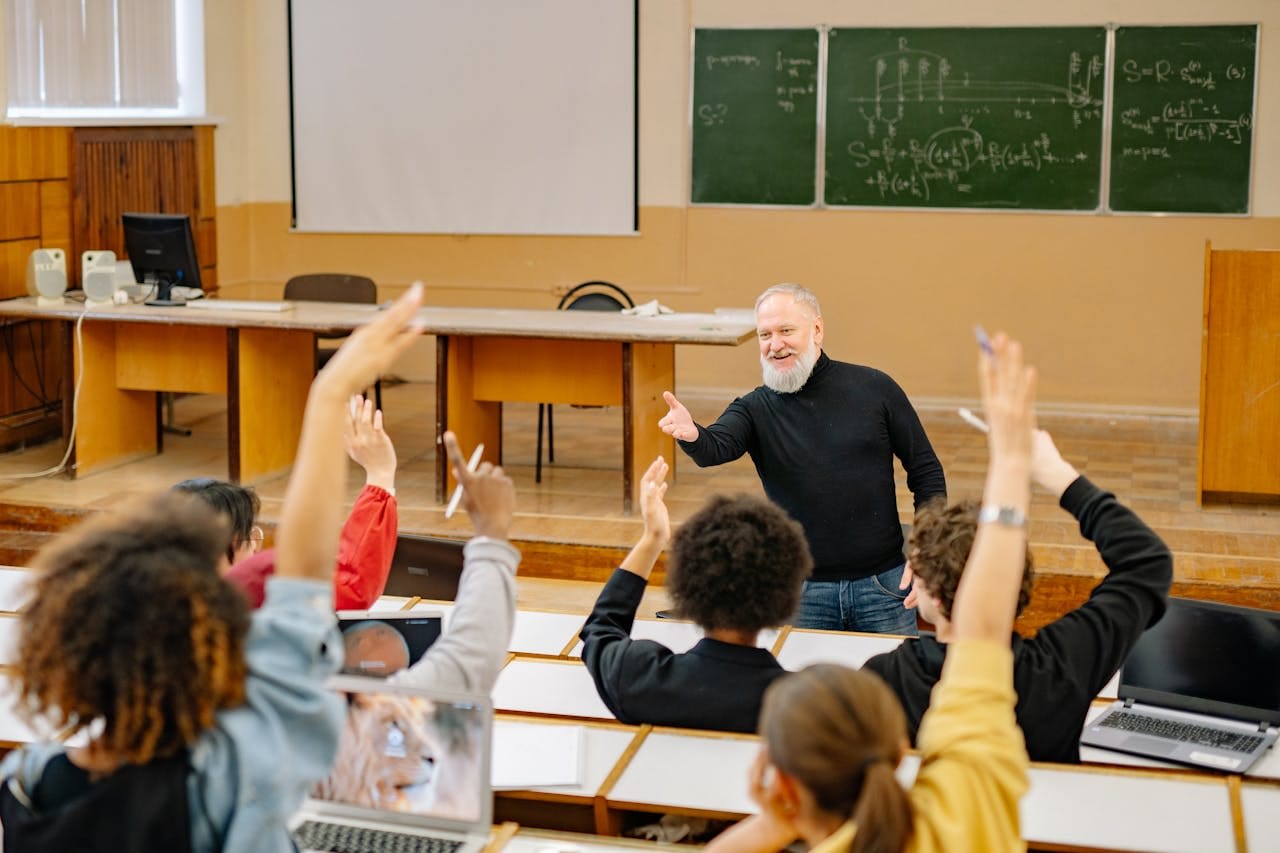Whole Brain Teaching
Whole Brain Teaching is often described as "organized chaos,". It’s not the quiet, orderly classroom we might expect, but here's one thing—a silent classroom doesn’t always mean that real learning is taking place.

If you work in or live near a school you may hear students shouting and reciting a lesson in unison with so much energy that it echoes through the streets. The vibrant atmosphere is infectious, drawing in passersby who can't help but smile at the sound of young minds. Whole Brain Teaching is often described as "organized chaos,". It’s not the quiet, orderly classroom we might expect, but here's one thing—a silent classroom doesn’t always mean that real learning is taking place. With Whole Brain Teaching, the noise and movement are all part of an intentional, structured way of engaging every student in the lesson.
💡 Lessons learnt: Learning is not a spectator sport.
To keep this kind of environment under control, there need to be clear expectations, and that’s where Whole Brain Teaching (WBT) rules come into play. These rules are living, breathing parts of each day. The goal is to unite the class with a shared responsibility to follow and reinforce these rules. The rules are paired with simple gestures, which makes them memorable and easy to enforce. For example, when students get too chatty, instead of raising their voice, you might just flash the gesture for “Follow Directions Quickly” or “Raise Your Hand for Permission to Speak.” The students recognizing the gesture know what’s expected, and because they’ve practiced these rules, they respond without hesitation. This kind of consistency builds a smooth rhythm in the classroom, making it easier to manage even the liveliest groups of students.
For teachers, it’s important to review these rules regularly—at least once a day. The repetition makes them second nature, not just for the students but for the teacher too. With time, the entire class starts to move in sync, making room for deeper, more focused learning.
Why Does Whole Brain Teaching Work?
Picture yourself sitting through a meeting that goes on and on. You realize your attention starts to drift off at some point and your mind wanders. Kids in classrooms feel the same way. Whole Brain Teaching helps prevent “zoning out.” Combining speaking, listening, moving, and collaborating activates multiple parts of the brain simultaneously, keeping students' attention on the lesson. Here are what some studies have found about WBT:
- Improved Academic Performance: Studies indicate that WBT enhances student performance. WBT improved scores in General Chemistry for high school students in the Philippines, where students showed a substantial increase in mean post-test scores (specific scores not provided) and preferred the engaging, active style over traditional lectures (Abrenica & Casuncad, 2022). Similarly, a study on Grade 8 students in Algebra reported a significant performance increase in the WBT group over the control group in post-test results, indicating that WBT techniques were more effective (Sontillano, 2018).
- Enhanced Retention and Long-Term Memory: WBT’s interactive techniques, like gestures and repetition, aid in transferring information to long-term memory. In a study of Year 4 students, WBT’s use in science classes contributed to an average learning gain of 20% as measured by pre and post-tests, demonstrating strong retention benefits (Sudin & Abdullah, 2023).
- Increased Motivation and Engagement: WBT has also been found to boost motivation and engagement. In a study with high school physics students, the method resulted in average-to-high motivation ratings, with intrinsic motivation ranking as one of the top components, helping to maintain students' attention and enthusiasm for the material (Torio & Cabrillas-Torio, 2015).
- Effective for Different Learning Styles: WBT adapts well to various learning preferences, such as auditory, visual, and kinesthetic. Research on middle school students (sample size: 30 students per group) showed that WBT improved reading comprehension for both visual and auditory learners, demonstrating its flexibility in addressing different learning needs (Lahita, Mujiyanto, & Sutopo, 2018).
- Benefits in Language and Communication Skills: In language classes, WBT has shown positive outcomes in helping students overcome shyness and improve their speaking abilities. For instance, college students studying English as a second language increased their average speaking scores from a pre-test score of 6.6 to a post-test score of 7.8 after instruction with WBT methods (Kusumayati, 2015).
6 Well-known Whole Brain Teaching techniques
Class-Yes: The teacher says "Class," and students respond with "Yes!" in the same tone and energy. This helps students focus their attention and quickly engage in a new activity or lesson.
Mirror Words: The teacher says "Mirror Words," and students repeat the teacher's words while mirroring gestures. This technique helps students internalize information by using both verbal and physical repetition.
The Five Classroom Rules: Teachers reinforce these rules with consistent practice and hand gestures.
- Rule 1: Follow directions quickly.
- Rule 2: Raise your hand for permission to speak.
- Rule 3: Raise your hand for permission to leave your seat.
- Rule 4: Make smart choices.
- Rule 5: Keep your dear teacher happy.
Scoreboard Game: This is a simple reward and consequence system. The class earns "points" for good behavior and loses points for less desirable behavior, creating an incentive to stay engaged and follow the rules.
Brain Engagers: Teachers use a mix of activities, like songs, chants, and movements, to involve students and activate multiple areas of the brain, which helps with retention and interest.
Gestures for Memorization: Using hand gestures linked to specific concepts makes content more memorable and helps students recall information by associating it with physical movements.

Adiutor
Adiutor means "helper" - we do just that, by taking a load of your school administration and helping you focus on what matters most: the kids.
References
Abrenica, J., & Casuncad, J. D. (2022). Effectiveness of Whole Brain Teaching style in enhancing the academic performance of grade 11 students in General Chemistry I. SEAQIS Journal of Science Education.
Kusumayati, L. D. (2015). Penggunaan Whole Brain Teaching (WBT) untuk meningkatkan kemampuan berbicara mahasiswa. ETERNAL (English Teaching Journal).
Lahita, N., Mujiyanto, J., & Sutopo, D. (2018). The effectiveness of Whole Brain Teaching and Reciprocal Teaching in reading to visual and auditory students. English Education Journal, 8(3), 186-194.
Sontillano, R. D. (2018). Impact of Whole Brain Teaching-based instruction on academic performance of grade 8 students in Algebra: Compendium of WBT-based lesson plans. PIJTEL, 2(2), 98-114.
Sudin, N. H., & Abdullah, H. (2023). Whole Brain Teaching strategies promote active learning students year four in science subject. International Journal of Modern Education.
Torio, V. A. G., & Cabrillas-Torio, M. Z. (2015). Whole brain teaching in the Philippines: Teaching strategy for addressing motivation and academic performance. International Journal of Research Studies in Education, 5.
